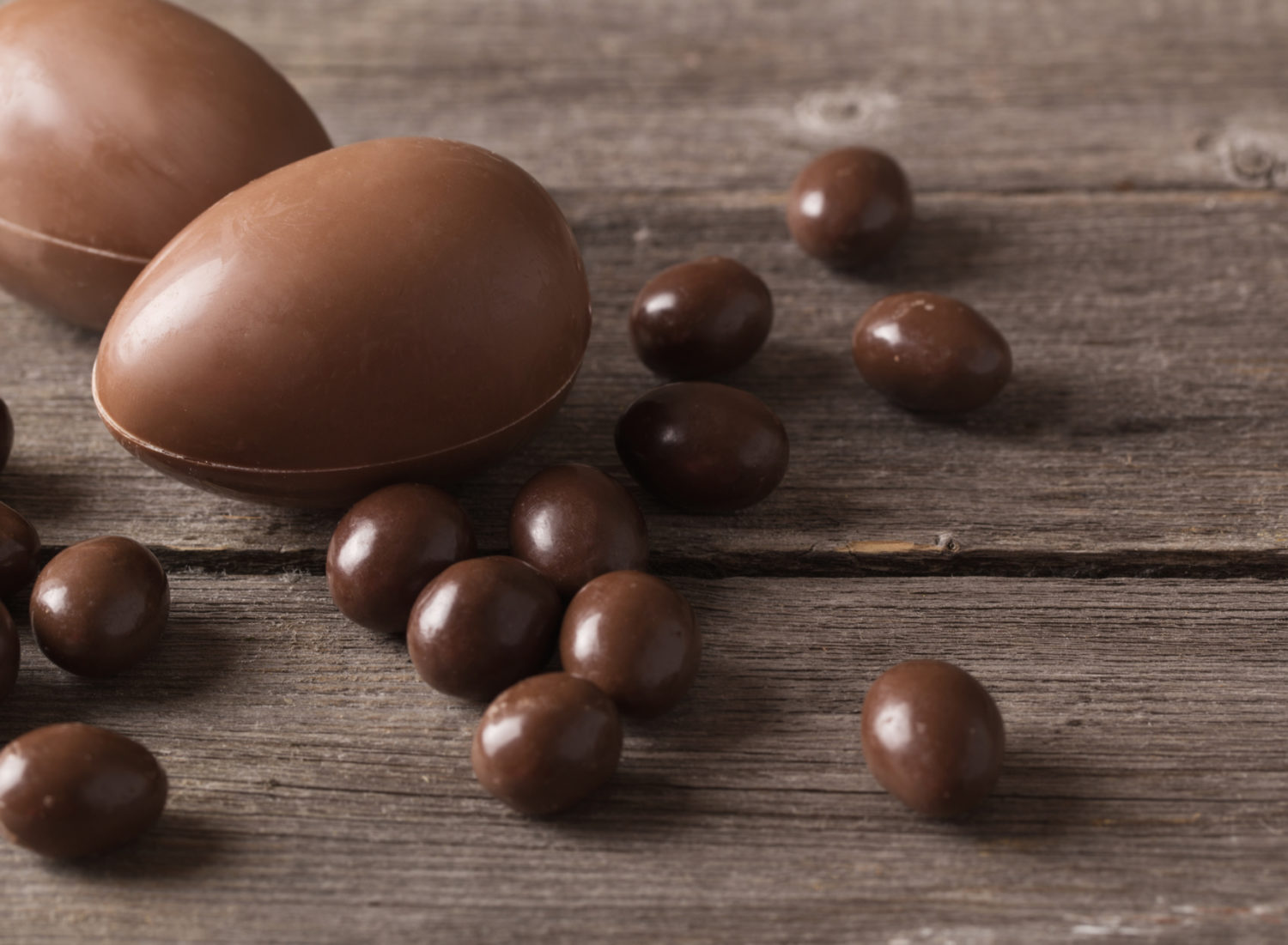With Easter fast approaching – so too does the annual dilemma associated with it – should Easter chocolate be kept in the refrigerator, freezer or at room temperature? For every other day chocolate consumers this question can raise anxiety levels even in the coolest of calm people. For life long chocolate aficionados, Easter chocolate is just another variety to which they continue on whatever practises they already have in place (whether that be to chill, freeze or maintain room temperature for best consumption).
 When it comes to the science of chocolate there a number of influencing storage factors.
When it comes to the science of chocolate there a number of influencing storage factors.
At one point in time I am sure everyone has encountered ‘that’ dreaded chocolate bar – you know ‘that’ one I am talking about. You rip open the package of this sumptuous morsel of goodness to find it has white marks all over it and looks a little powdery. Your dreams of devouring this little piece of happiness have just melted away. Or have they?
Ostwald ripening:
This is what is known as Ostwald ripening. Over time small cocoa butter crystals become larger, often developing at the surface they become visible to the naked eye. The white deposit we see on our chocolate bar (also known as a fat bloom) is the end result. Typically large temperature fluctuations fuel this reaction. Often they occur during the transportation stages (from manufacturer to retailer) where the chocolate may have been in and out of warehousing and transportation, at varying temperatures from cold to hot if mishandled, so by the time they reach our hot little hands, the damage has already been done. Sometimes we only have ourselves to blame after leaving it overnight in a cool car, which then becomes an oven on a hot summers day. The chocolate sweats, depositing the cocoa butter on the surface. Whilst it certainly looks unappetising, rest assured it does not harm the taste – it’s still perfectly safe to consume – just cover your eyes or eat it in the dark if it offends your eyes!
Oxidation:
Just like wine, chocolate can be affected when it comes into contact with light and air. Unlike Ostwald ripening, oxidation will impair the flavour and often create a very unappealing odour. Natural substances in cocoa do slow down the oxidation process, which is why dark chocolate is better protected against oxidation compared to traditional milk chocolate, as dark chocolate has a relatively higher cocoa content. This is why white chocolate is much more sensitive to oxidation as it does not contain any cocoa constituents. To protect against oxidation, once open, ensure chocolate is stored in airtight containers or zip locked bags.
Diffusion, odour and taste transmission:
Other substances in the environment can diffuse through chocolate packaging and vice versa . Environmental factors can influence the taste and smell of chocolate. Hence why many chocolates these days are wrapped in foil, some with an additional layer or packaging or cardboard. Where possible chocolate should always be kept in an airtight container to reduce the impact of external factors.
Hygroscopy:
Without a protective packaging, the minimal water content in chocolate (about 0.6%) can quickly absorb water which in turn can create a fat bloom (the white deposits). In worst case scenarios, mould. When fully packaged due to the very low water content, from a microbial perspective it is very safe, as spores aren’t able to multiply easily.
Heat:
There are a few different crystal forms of cocoa butter. While a couple are eliminated during the manufacturing process, type V crystal remains in the chocolate. Type V is very desirable, because with a melting point of about 32°C it literally melts in your mouth. If you have inadvertently cooked your chocolate in a car though for example, it changes the crystal formation to type IV which has a higher melting point (37°C), which means it will no longer melt in your mouth and doesn’t taste as good.
So the ultimate question…
Should chocolate be stored in the fridge, freezer or at room temperature?
Freezer storage?
At a temperature of -18°C, freezer storage tests revealed that properties in chocolate were well preserved.
Refrigerator storage?
As long as chocolate remains in its sealed packaging, chocolate can be stored in the fridge without any detrimental effects to the smell or flavour for months. Air tight containers are required once the chocolate is opened, to minimise any impact from other environmental influences.
Room temperature?
Generally for up to 6 months, there will be no evident quality difference whether stored at room temperature vs refrigerator for normal full milk chocolate. For more sensitive chocolate such as truffles, comparative tests revealed an impact at earliest after 3 months, whilst for those with critical content such as pralines with cream filling, it was most definitely recommended to store in the refrigerator.
In conclusion:
Whether you choose to store in the freezer, refrigerator or at room temperature will ultimately come down to a few factors such as the type of chocolate and how long you wish to preserve it for. Also whether you like your chocolate chilled to the core or an instant melt in the mouth experience, might also influence your storage decision. However if you are like the author of this blog none of the above are a possible storage solution. Because once chocolate enters the premises, it exits almost instantaneously – devoured by the waiting hoards. No such thing as chocolate storage in this house.




